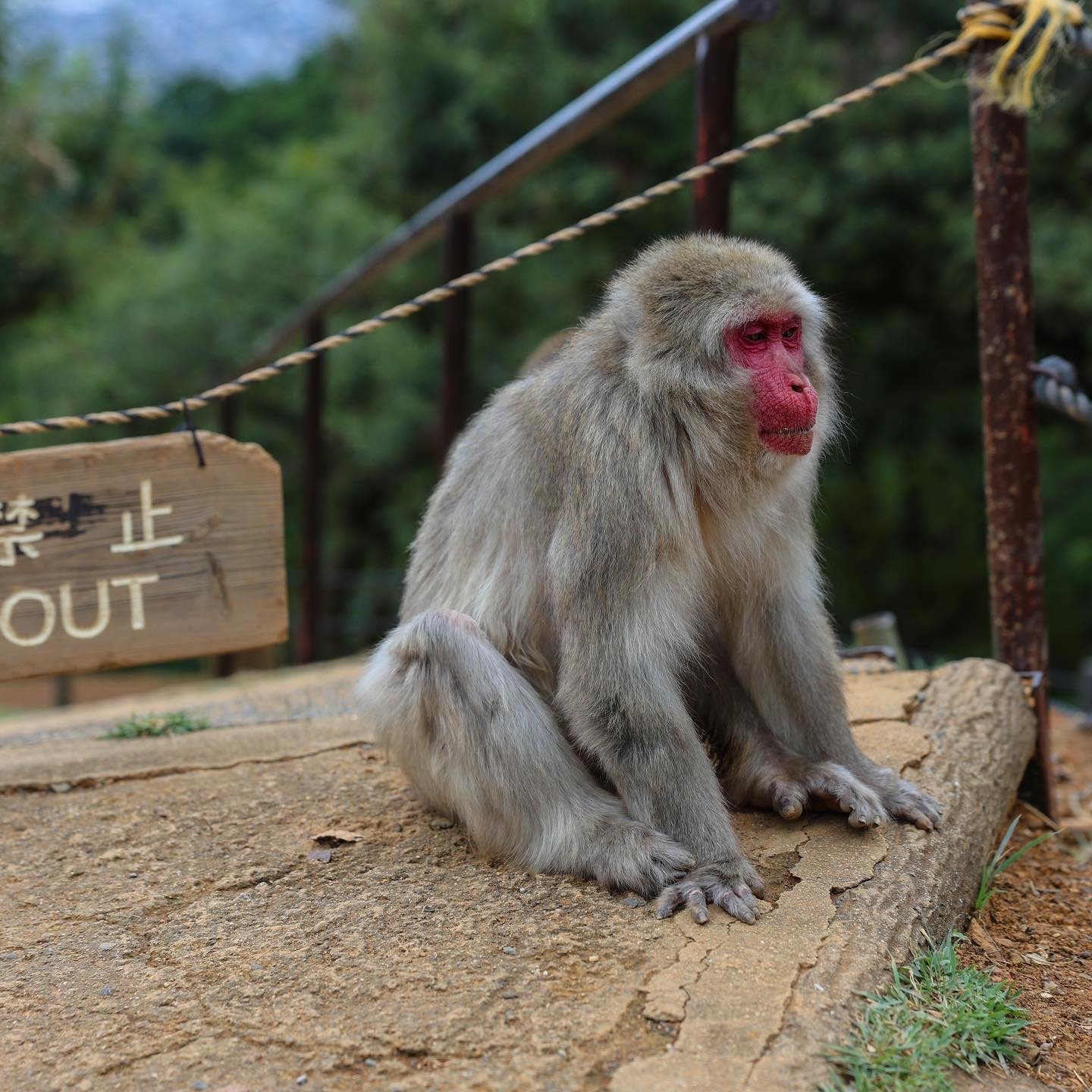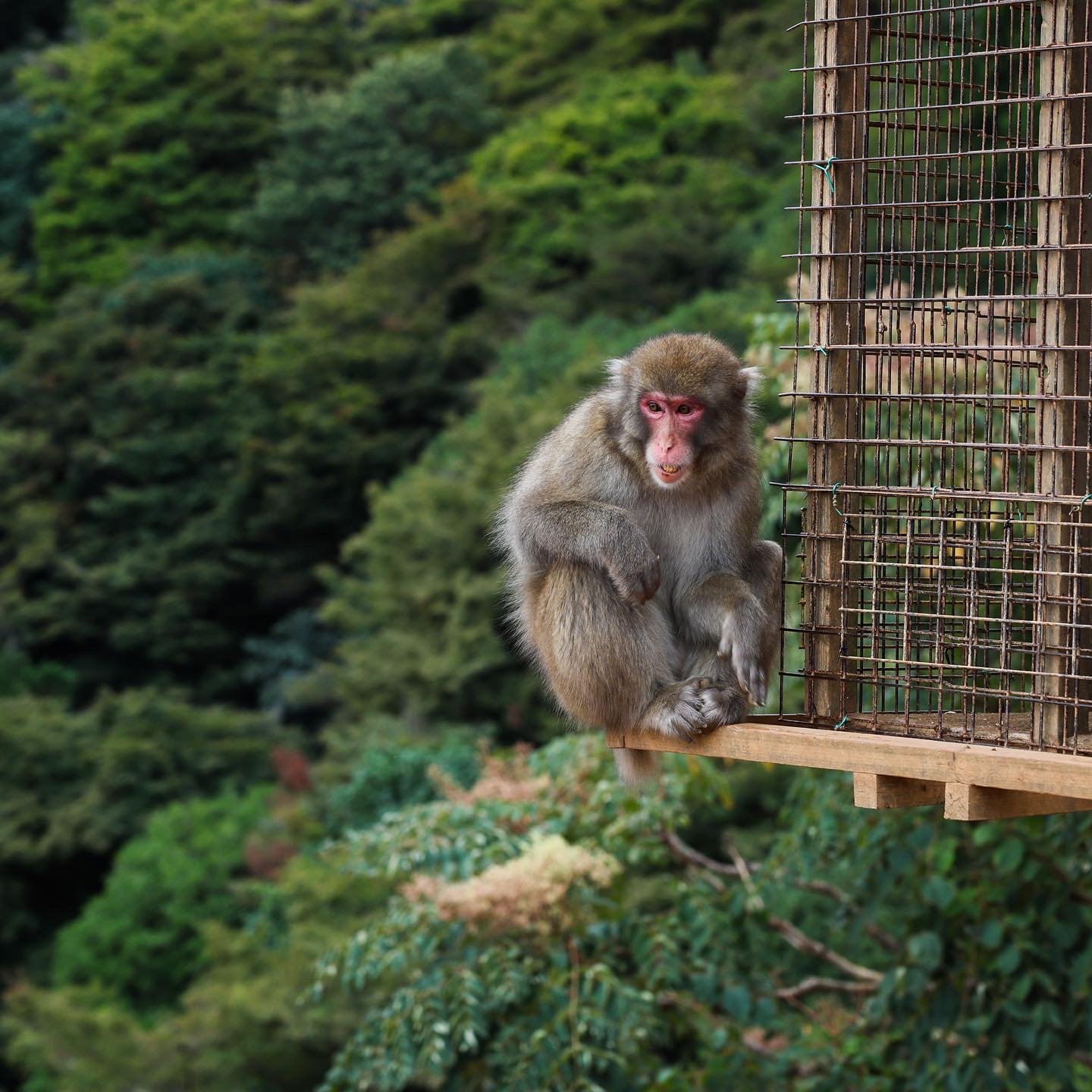Fancy a Visit to Arashiyama Monkey Park Iwatayama?
by Laura Studarus
Monkey Around in Kyoto
Plenty gets written about the Jigokudani Monkey Park. But if you're visiting Japan outside the winter months–or you don’t feel quite driven to make the side trip to Nagano to meet some of Japan’s most famous residents–it can be an experience that doesn’t always live up to expectations.
If you’re determined to have a unique animal experience, and short on travel days, the Monkey Park Iwatayama can be a great substitute. Located in the Arashiyama neighborhood of Kyoto, visiting the monkeys can be accomplished in under two hours–leaving you with plenty of adorable photos, incredible memories, and time to see more of the city’s offerings.
If seeing Japanese Macaques with red, weather-beaten faces, long hair, and an intense love of apples appeals to you, read on–we’ve got all the information you might need for a day of monkeying around in Kyoto.
A brief history of the park
In the early 1950s, a scientist from the University of Kyoto began feeding monkeys for research purposes. Famous for their love of snacks (then again isn’t that all of us?) the simian interest in a free meal grew, and the hill overlooking Kyoto became an official monkey park, opening to the public in 1955. Since then, the local troup has grown to about 130 Japanese Macaques. It’s regularly voted a must-see tourist site in Kyoto, and even Tom Cruise is a noted fan.
Do I have to hike to get there?
In short, yes. The park is at the top of the hill, with a .9 mile trail connecting the entrance to the actual monkey area. It’s a fairly well-kept, wide path. However, keep in mind that it's a notably steep climb–so the 20-30 minute estimate might be a bit ambitious if it’s very hot or rainy. The good news: the path is lined with benches, and once you’re at the top you can stay as long as you want–making it well-worth the work. Just be sure to wear good walking shoes so that you don’t mind getting dusty or a bit muddy.
What kind of contact can I have with the monkeys?
While the macaques are super cute, it’s always worth remembering that they’re wild animals. As signs leading up to the park remind visitors, never stare directly into the monkeys eyes (they consider it to be aggressive), and always keep your distance. However, from inside the rest hut (aka the large wooden house at the top of the hill), you can buy bags of peanuts and apples to feed the monkeys who gather around the hut’s wire-framed windows. Just be sure to offer your new friends their treats with a flat hand to avoid being bitten.
Is it ethical?
A great question to ask whenever there are animals involved in an experience. The 130 or so residents of Monkey Park Iwatayama are there voluntarily, encouraged to stick around thanks to a regular feeding schedule. (10:30 a.m., 12:30 p.m., and 2:30 p.m–but as always, these times are subject to change.) And employees are always close by to remind human visitors to follow the rules. The only “cage” on the premises is the one that human guests go into before giving monkeys a snack.
I’d like to visit. So how do I do it?
Visiting hours are from 9am - 4:30pm. To get there, take the train from JR Kyoto Station to JR Saga-Arashiyama Station, and across the Togetsukyo Bridge to the opposite side to reach the base of the park of Mt. Arashiyama. Keep an eye out for the cartoon monkey sign that marks the entrance.
Tickets can be purchased from the vending machine at the base of the mountain. (Bring cash!) Adults cost ¥550 and children ¥250.
What else is there to do after I see the monkeys?
The Arashiyama district is nationally recognized for its scenic beauty. Regardless of the time of year, there’s usually something beautiful to enjoy either before or after visiting the monkeys. Wander through the bamboo forest. (Just come early if you’re after a photo opp!) Take in the gorgeous river views of Togetsukyo Bridge–a spot that only becomes more stunning during sakura and autumn leave season. Escape the crowds and drink in the beauty of a traditional Japanese garden (and drink actual matcha) at Okochi Sanso Villa. Need a break? The area also has some of Kyoto’s best onsens so try soaking your cares away at classic hot spring bath houses like Fu-fu-no-yu or Hanaikada.





